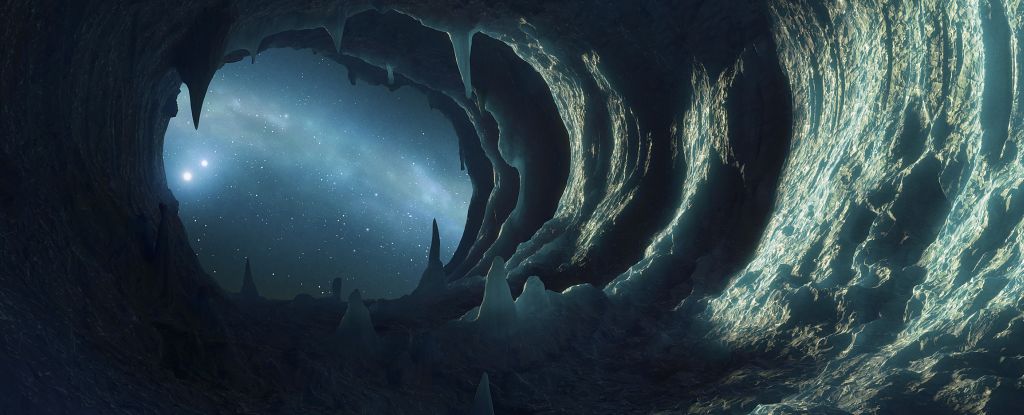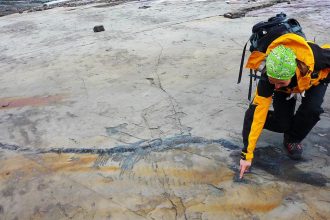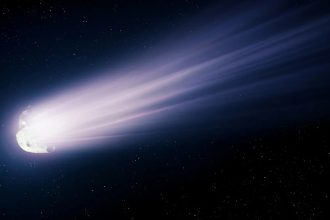Recent research indicates that ice found in the depths of space behaves differently than previously assumed. Utilizing computer simulations and experimental methodologies, scientists have uncovered that this common form of water in the universe possesses a degree of internal structure, specifically tiny repeating patterns known as crystals, embedded within a frozen mix of molecules.
Traditionally, it was believed that the extremely low temperatures in space were insufficient for ice crystals to form, making this discovery particularly surprising. “We now have a good idea of what the most common form of ice in the Universe looks like at an atomic level,” stated physicist Michael Benedict Davies from University College London and the University of Cambridge in the UK. He emphasized the significance of this research, noting the role ice plays in various cosmological processes, including planet formation, galaxy evolution, and the movement of matter throughout the universe.
Water, essential for life on Earth, has long been viewed as a peculiar substance, exhibiting behaviors distinct from other liquids. Scientists recognize at least 20 different phases of frozen water. Typically, ice is categorized into two types: crystalline, like that we find on Earth, where atoms are neatly organized, and amorphous, which was thought to consist of a disordered assemblage of atoms in space.
However, some analyses have suggested that amorphous ice may contain partially crystalline formations. In light of these findings, Davies and his team initiated a series of computer simulations and experiments. They froze virtual containers of water down to approximately -120 degrees Celsius (-184 degrees Fahrenheit), manipulating the freezing rate. These variations resulted in differing proportions of amorphous and crystalline ice, with some structures demonstrating ordered atomic configurations.
Earlier studies employed X-rays to examine the structure of amorphous ice, where beams would reflect off its interior. The research team’s findings indicated that the optimal match for these experiments involved a composition of around 20 percent crystalline and 80 percent amorphous ice.
The researchers conducted additional experiments to produce amorphous ice in a manner akin to the freezing processes occurring in space, which typically involves the direct solidification of water vapor onto surfaces like rocks. By depositing water vapor onto a cooled surface, they mimicked this natural phenomenon. They also created higher-density amorphous ice by crushing it at exceptionally low temperatures, then gradually warming the samples to allow for crystallization.
Notably, ice has the ability to retain a memory of its previous crystalline structure, specifically the arrangement of its hydrogen atoms. When analyzing the warmed samples, the researchers noted structural differences indicating the presence of crystalline regions within the amorphous ice; a fully amorphous structure would not exhibit such variations.
While these experiments were conducted on Earth, the researchers assert that they provide compelling evidence that ice in space may indeed consist of minute crystalline regions. This discovery could enhance our understanding of not only extraterrestrial water but also amorphous materials in a broader context. “Ice on Earth is a cosmological curiosity due to our warm temperatures. You can see its ordered nature in the symmetry of a snowflake. Ice in the rest of the Universe has long been considered a snapshot of liquid water – that is, a disordered arrangement fixed in place. Our findings show this is not entirely true,” explained Christoph Salzmann, a physical chemist at University College London.
This research has potential implications for various technologies as well. “These materials have important uses in much advanced technology. For instance, glass fibers that transport data long distances need to be amorphous, or disordered, for their function. If they do contain tiny crystals and we can remove them, this will improve their performance,” Salzmann added.
The findings were published in the journal Physical Review B.












